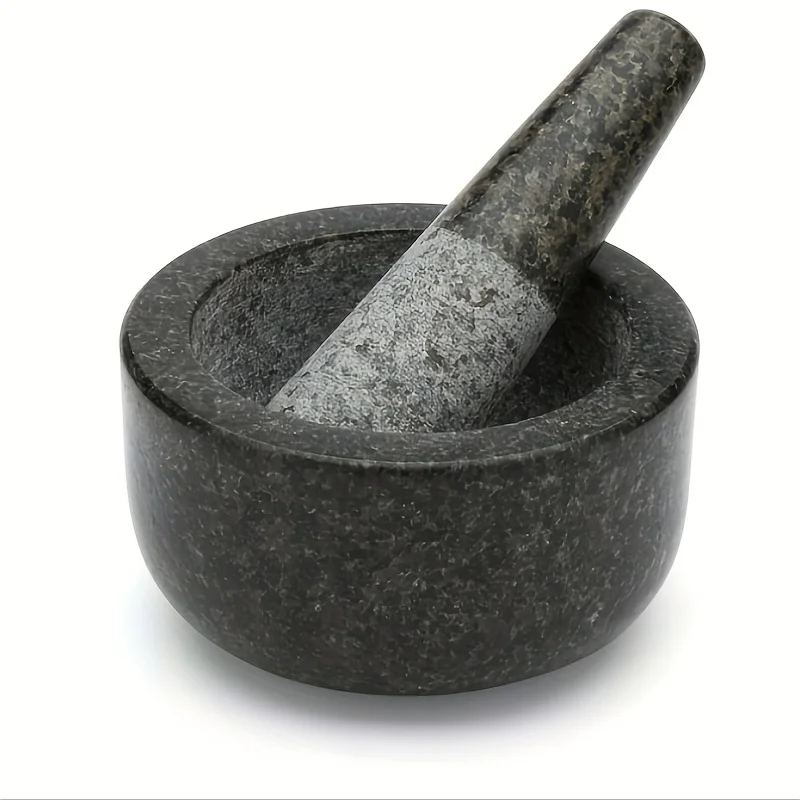
Introduction
This is a classic kitchen and apothecary tool used for grinding, crushing, and mixing various ingredients. With a history dating back thousands of years, this simple yet effective tool remains indispensable in many culinary and medicinal practices. Whether you’re grinding spices for a flavorful dish or preparing herbal remedies, understanding how to use and care for a mortar and pestle can enhance your cooking and apothecary skills. This guide explores the types of mortars and pestles, their benefits, and tips for choosing and maintaining them.
History of Mortar and Pestle
- Ancient Origins:
- Early Uses: These have been used since ancient times across various cultures for grinding grains, spices, and herbs. Evidence of their use dates back to civilizations such as the Egyptians, Greeks, and Romans.
- Cultural Significance: In many ancient societies, mortar and pestle were essential tools for both culinary and medicinal purposes, reflecting their importance in daily life.
- Evolution:
- Material Advancements: Over time, these have been made from various materials, including stone, wood, ceramic, and metal. Each material offers different benefits and characteristics.
- Modern Uses: While their design has evolved, the fundamental purpose of mortar and pestle remains the same: to efficiently grind and mix ingredients.
Types of Mortar and Pestle
- Granite Mortar and Pestle:
- Description: Made from solid granite, this type of set is highly durable and effective for grinding spices and herbs. The rough texture of the granite provides excellent grinding action.
- Styles: Typically features a large bowl and a heavy, rounded pestle. Granite mortars come in various sizes to suit different needs.
- Design Tips: Choose a granite mortar and pestle for heavy-duty grinding tasks and durability. It is ideal for use in both professional and home kitchens.
- Marble Mortar and Pestle:
- Description: Constructed from marble, this type of set offers a smooth, elegant surface. It is commonly used for grinding herbs and spices.
- Styles: Available in various sizes and shapes, often featuring a polished finish.
- Design Tips: Opt for a marble mortar and pestle for its aesthetic appeal and smooth grinding surface. It is suitable for lighter grinding tasks and decorative use.
- Wooden Mortar and Pestle:
- Description: Made from various types of wood, such as maple or olive, wooden mortars and pestles are lightweight and gentle on ingredients.
- Styles: Includes simple designs with smooth surfaces or more intricate carvings.
- Design Tips: Choose a wooden mortar and pestle for its natural look and gentle grinding action. Note that wooden tools require regular seasoning and maintenance.
- Ceramic Mortar and Pestle:
- Description: Ceramic mortars and pestles offer a smooth surface that is easy to clean. They are often used for grinding spices and mixing small quantities of ingredients.
- Styles: Available in various colors and designs, including traditional and modern styles.
- Design Tips: Select a ceramic mortar and pestle for its ease of cleaning and aesthetic appeal. Ensure it is durable enough for your intended use.
- Metal Mortar and Pestle:
- Description: Made from materials such as stainless steel or brass, metal mortars and pestles are durable and resistant to corrosion. They are often used in professional settings.
- Styles: Typically features a sleek, modern design with a smooth grinding surface.
- Design Tips: Choose a metal mortar and pestle for its durability and resistance to damage. It is suitable for heavy-duty grinding tasks.
Benefits of Using a Mortar and Pestle
- Enhanced Flavors:
- Fresh Grinding: Grinding spices and herbs with a mortar and pestle releases essential oils and enhances flavors, providing a fresher taste compared to pre-ground products.
- Custom Blends: Allows for the creation of custom spice blends and seasoning mixes tailored to your preferences.
- Versatility:
- Culinary Uses: Ideal for grinding spices, making pastes, and mixing ingredients. Can also be used for crushing garlic, ginger, and other fresh ingredients.
- Medicinal Uses: Useful for grinding herbs and preparing tinctures or powders in apothecary practices.
- Control:
- Texture: Provides control over the texture of ground ingredients, allowing you to achieve fine or coarse grinds based on your needs.
- Precision: Enables precise control over the consistency of pastes, powders, and mixtures.
- Durability:
- Longevity: High-quality mortar and pestle sets are durable and can last for many years with proper care.
- Sturdy Design: Made from robust materials, they are built to withstand repeated use.
How to Choose the Right Mortar and Pestle
- Material:
- Durability: Choose a material that suits your needs for durability and ease of use. Granite and metal are ideal for heavy-duty tasks, while marble and ceramic offer aesthetic appeal.
- Maintenance: Consider how easy it is to clean and maintain the mortar and pestle. Some materials, like wood, require regular seasoning, while others are more low-maintenance.
- Size and Capacity:
- Usage: Select a size that matches the quantity of ingredients you typically work with. Larger mortars are suitable for bulk grinding, while smaller ones are ideal for individual portions.
- Space: Ensure the size of the mortar and pestle fits comfortably in your workspace and storage area.
- Design and Functionality:
- Shape: Consider the shape of the bowl and pestle. A well-designed shape can enhance grinding efficiency and comfort.
- Features: Look for features such as textured surfaces for better grinding or ergonomic designs for ease of use.
How to Use a Mortar and Pestle
- Grinding Spices:
- Preparation: Place a small amount of spices or herbs into the mortar. Hold the pestle firmly and use a circular motion to grind the ingredients.
- Consistency: Adjust the pressure and grinding technique to achieve the desired texture, whether fine or coarse.
- Making Pastes and Sauces:
- Ingredients: Add the ingredients to the mortar and use the pestle to crush and mix them into a paste or sauce.
- Mixing: Use a combination of grinding and stirring motions to achieve a smooth and well-blended mixture.
- Preparing Herbal Remedies:
- Herbs: Place dried herbs or roots into the mortar and grind with the pestle until they reach the desired consistency.
- Mixing: Combine with other ingredients as needed for tinctures, powders, or other herbal preparations.
Care and Maintenance
- Cleaning:
- Post-Use: Clean the mortar and pestle after each use to remove residue and prevent cross-contamination. Use a brush or damp cloth for cleaning.
- Deep Cleaning: For stubborn residue, use a mild detergent and water. Avoid soaking or using harsh chemicals.
- Seasoning:
- Wooden Mortars: Season wooden mortars with food-grade mineral oil to prevent drying and cracking. Wipe excess oil off after application.
- Stone Mortars: Some stone mortars may need to be seasoned before first use to remove any dust or residue from manufacturing.
- Storage:
- Dry Environment: Store mortar and pestle in a dry place to prevent moisture damage. Avoid exposing to extreme temperatures or direct sunlight.
- Proper Placement: Ensure that these are placed securely to avoid accidental damage or breakage.
- Regular Inspection:
- Check for Wear: Inspect it regularly for signs of wear or damage. Address any issues promptly to maintain functionality.
Conclusion
These are invaluable tools in both culinary and apothecary practices, offering precision, versatility, and enhanced flavor. With various materials and designs to choose from, you can find the perfect mortar and pestle to suit your needs and preferences. By understanding their history, benefits, and proper care, you can make the most of this timeless tool and enjoy its many advantages in your kitchen and beyond.
